Best road bike tires for summer riding 2025
Here’s our pick of the best tires which balance speed, grip and puncture protection
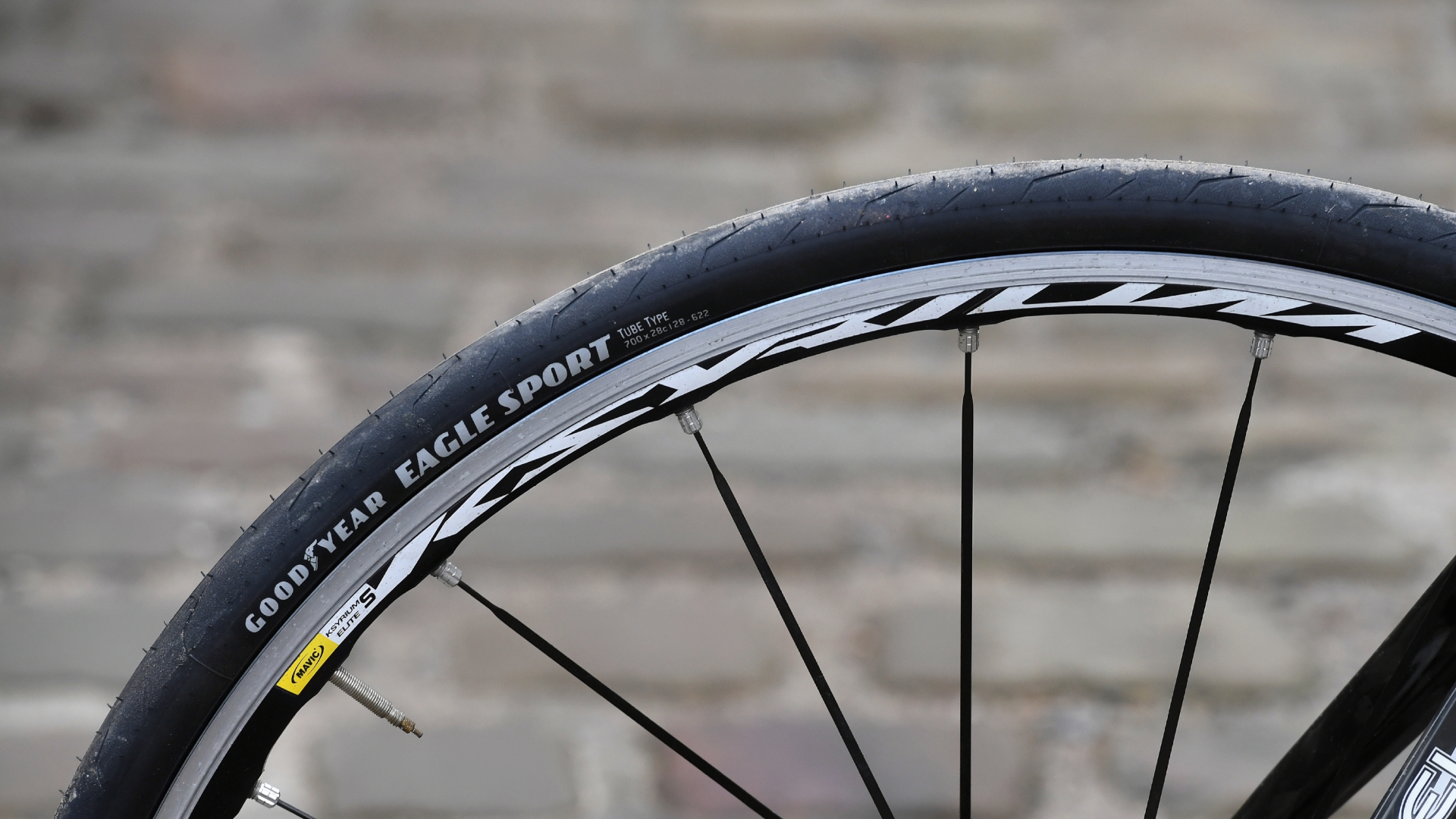

The best road bike tires will add some extra speed, grip and comfort to your summer riding. There are plenty of choices out there, with manufacturers putting a lot of R&D into their rubber compounds and tire construction for the best road bike tires in their ranges.
Speed can come at the expense of durability though, particularly once the weather starts to deteriorate as winter approaches, so you might want to swap to more robust winter tires for the cooler months and keep your best road bike tires for next summer. Paired up with the best road bike wheels, you'll appreciate the edge they give when the weather perks up again.
Wider tires and rims have become more popular across the seasons. Where once 23mm rubber was the uniform issue 'choice', now 25mm is the norm, with many bikes coming with 28mm + to better maximise the added cornering grip and comfort on offer from this once scandalous choice.
Paired with the right rim, wider tires can be more aerodynamic, too. However, it is important to check that your frame has the clearance for a wider tire on your usual rim width if you have a frame with tighter clearances.
Here's our selection of the best road bike tires that we've tested here at Cycling Weekly. Head to the bottom of the page for our buyer's guide to road bike tires.
Best road bike tires for warmer weather
We've rounded up a the best road bike tires that we'd recommend riding in the warmer seasons.
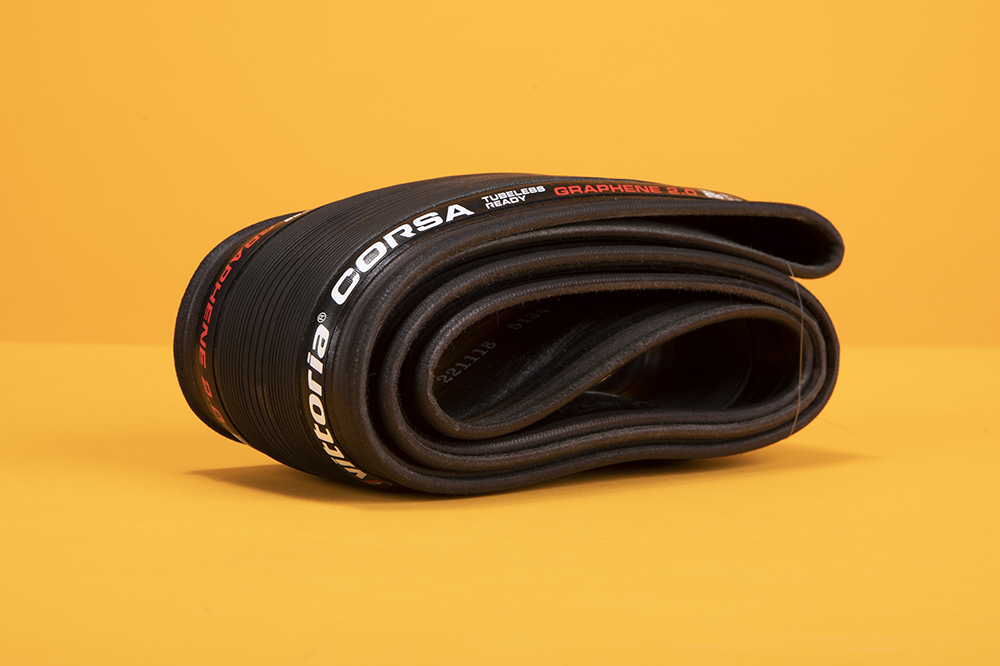
Specifications
Reasons to buy
Reasons to avoid
The Vittoria Corsa is often considered a go-to race tire and has been the choice of more pro teams than it's possible to list, but often with the gamble of speed over durability. Not as much of an issue if you're pro and have a team car loaded with spare wheels, more so if you're stripped of your local Crit win due to a sudden deflation.
The Vittoria Corsa G2.0 TLR features a new improved graphene compound, which helps keep the Corsa's known fast rolling properties, but now with added protection.
While this is no match for the likes of the Continental GP5000, it does make a marked difference in the lifespan of a pair, making these a winning tire, so much so that we selected them for a Cycling Weekly Editor's Choice Award.
The tubeless option weighs 70g more per tire than the non-tubeless version, however total system weight will be comparable, as inner tubes are dispensed with.
Read more: Vittoria Corsa G2.0 TLR tire full review
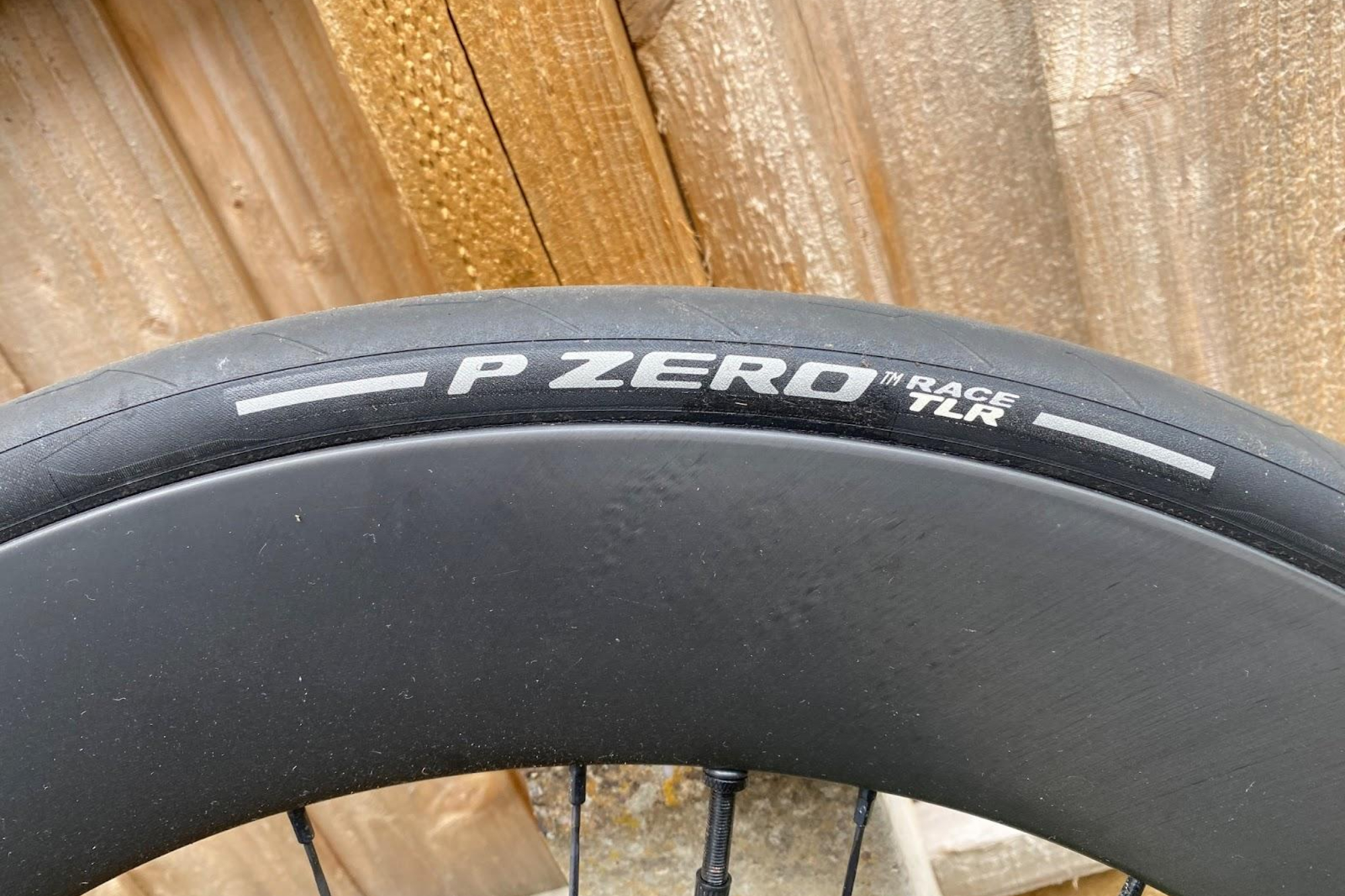
Specifications
Reasons to buy
Reasons to avoid
Pirelli's tire design for the P Zero Race TLR incorporates aramid fibers into the rubber compound, so you get puncture protection without adding a separate breaker layer.
Among the five widths on offer, the 28mm and 30mm tires are hookless compatible, although note that Pirelli has issued a recall of the 28mm tire. There are multiple color options too.
We found the tires easy to mount and comfortable to ride, with a profile that didn't bulge at the sides, which may provide aero benefits. They feel fast too and a little more supple than the Continental GP 5000, leading to an increase in average speeds, while both wet and dry grip are great.
Read more: Pirelli P Zero Race TLR tire full review
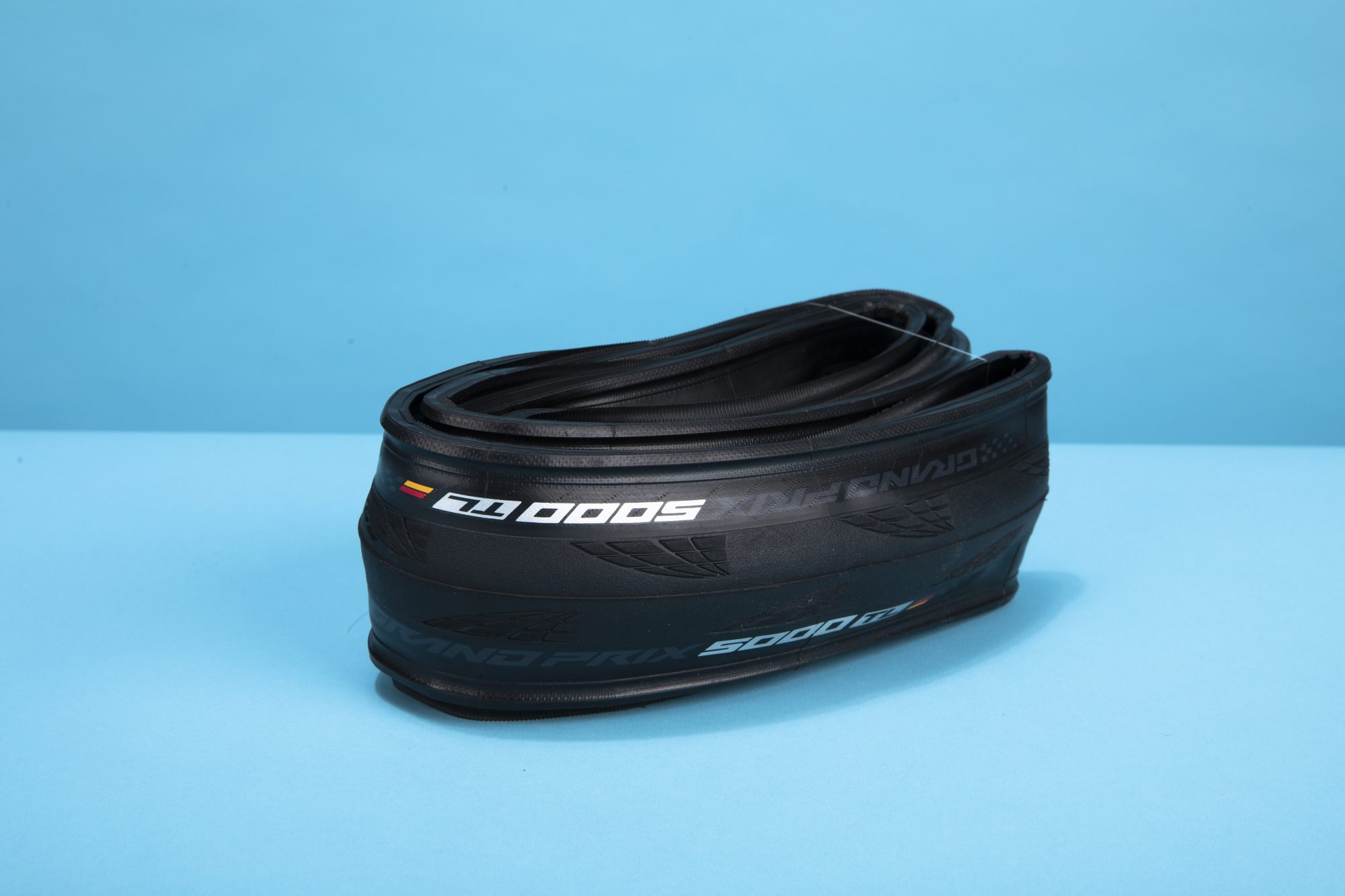
Specifications
Reasons to buy
Reasons to avoid
We absolutely love the GP 5000, and, if we were to ride only one pair of tires year round, it would be these, content with sitting in either best summer or best winter tires for road cycling buying guides. The Grand Prix 5000 replaces the popular Continental GP 4000 (or GP 4000 S II) and it's an all-weather, all-condition Jack of all trades tire.
As with the GP4000, the GP5000 has also gained Cycling Weekly Editor's Choice Award status, making these a go-to pair for many of our testers.
It may not be as fastest tire on paper, but the effective Vectran Breaker layer keeps punctures at bay whilst the famous BlackChili Compound and new 'LazerGrip' help keep you planted, which encourages rider confidence and ultimately rider speed. The latest iteration includes an extra layer for comfort, and claims to be 12 per cent faster and 20 per cent tougher than the outgoing model.
It's also available in a tubeless option, but we personally felt that the clinchers provided a more supple ride making these the best road bike tire for all round use.
Read more: Continental GP 5000 tire full review
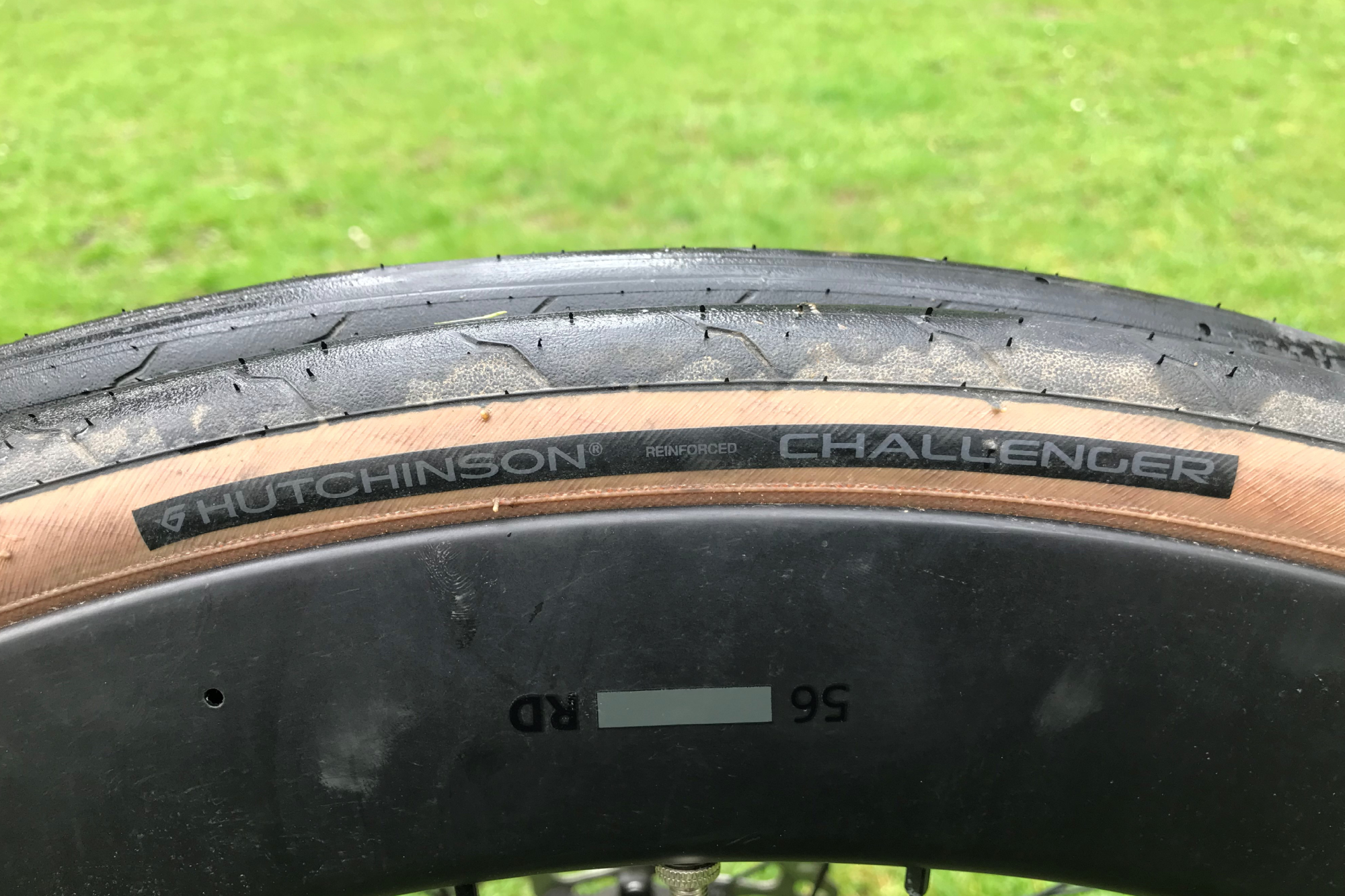
Specifications
Reasons to buy
Reasons to avoid
The Hutchinson Challenger road bike tires are durably built training tires that will suit most road riders, on most surfaces, for most of the year. After 500km+ over a relatively short review period, they are showing next to no signs of wear.
The tan walls look good, too, especially on a deep section pair of carbon rims.
Although slightly difficult to get on the initially – likely to be as much to do with tight rims as tight tire beads – we found they seated evenly once in place and inflated without trouble.
Currently clincher only, the brand is real-world testing a tubeless version.
Read more: Hutchinson Challenger full review
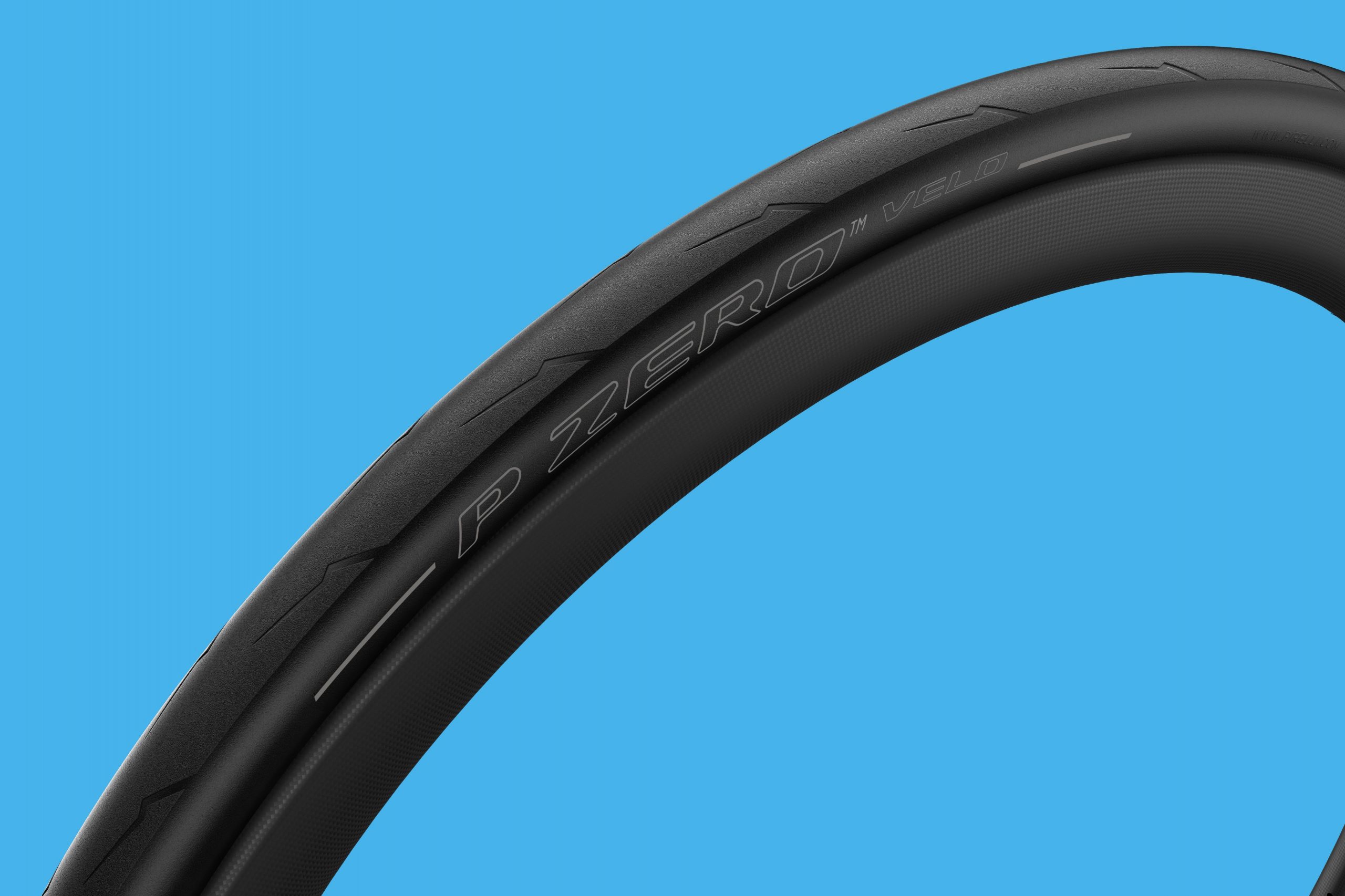
Specifications
Reasons to buy
Reasons to avoid
Another receiver of our Cycling Weekly Editor's Choice Award and rightly so. On test we highly rated the PZero Velo tires for their ability to balance speed, grip and resist punctures, even in wet conditions.
Launched at the same time as the Pirelli PZero Velo TT and Pirelli PZero Velo 4S, the PZero Velo marked a much welcome return to the cycling world after a long hiatus.
Fast rolling and having only suffered one puncture in three months of testing, we even threw a pair into a wet crit race, and felt incredibly grateful for the choice of the grip-happy tires when cornering in the wet at full throttle.
There are slightly more compliant options on the market like the Vittoria Corsa if you're after a silky smooth ride, but if you're looking for a confidence-inspiring, great road bike tire in changeable weather conditions you can't go wrong.
Read more: Pirelli P Zero Velo tire full review

Specifications
Reasons to buy
Reasons to avoid
Balancing ride quality with puncture protection and weatherproofing is an art, and we feel Specialized has cracked it with the Roubaix Pro.
The 120 TPI count sets it out as an endurance option, and the compound used is the brand's own in-house 'Gripton'.
The bead-to-bead Endurant Casing provides puncture protection which is lighter than the Kevlar and Nylon used elsewhere, like in the Maxxis High Road tires, and this is paired with BlackBelt technology (a strip of woven material running under the tread).
We mounted these on a pair of the high end Zipp 454 NSW carbon clincher wheels and although theoretically at opposite ends of the spectrum, they actually collaborated exceptionally well. Any speed limitations of the tires were negated by the wheels, and the added confidence of the road grip kept the average speed up high.
If you're looking for a fast solo ride with limited support on less than perfect road conditions, then the Specialized Roubaix Pro is one of the best road bike tires to pair with special wheels for confidence that you're not gambling speed over an untimely flat, making these ideal for less risk averse riders.
Read more: Specialized Roubaix Pro tire full review
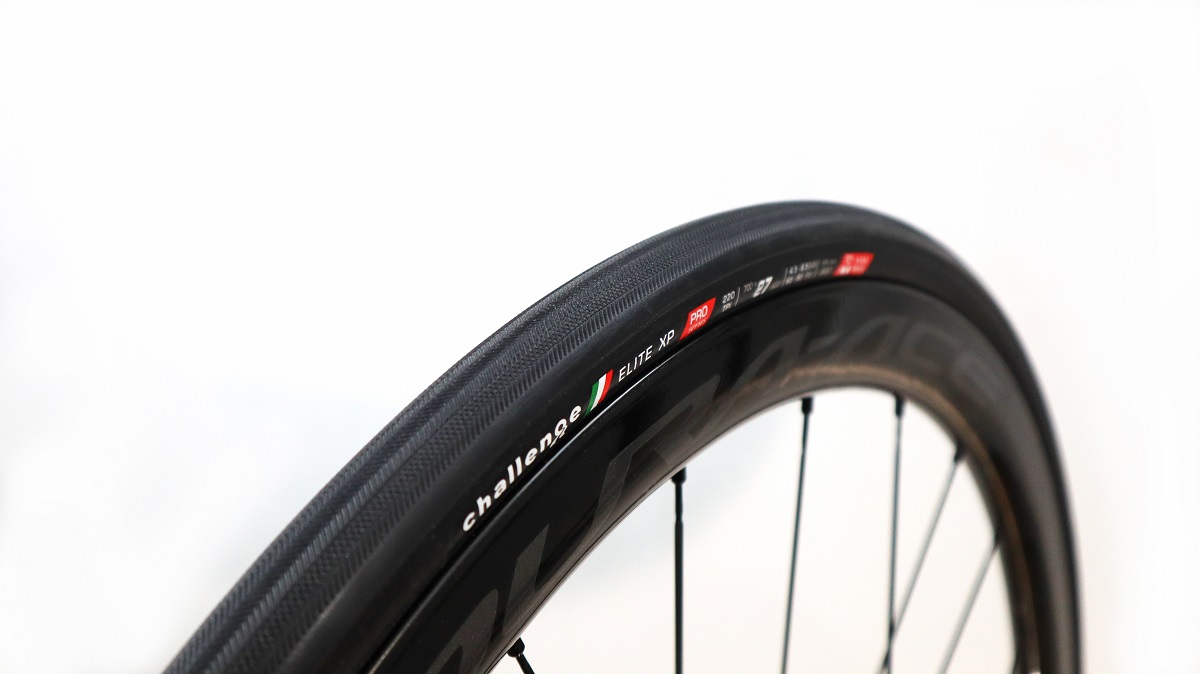
Specifications
Reasons to buy
Reasons to avoid
When compared to peers like the Continental GP5000 and Schwalbe Pro One tires, the standout feature of the Challenge Elite XP is their construction. The handmade tires use more natural fibres than average, so are more supple and have a lower rolling resistance.
Slightly tricky to fit, once on they didn't disappoint and on test we found these to be comfortable and very supple, with solid grip in corners, even in the wet.
Riding them in all conditions has meant a good test of their puncture protection which seems to be pretty robust.
The clincher only tire is the closest you'll get to crossing over into winter riding territory, and it would certainly be a good option for year round riding.
The Challenge Elite are great road bike tires, we'd put them level with the highly rated Continental GP5000 performance-wise but they can often be found slightly cheaper.
Read more: Challenge Elite XP tire review
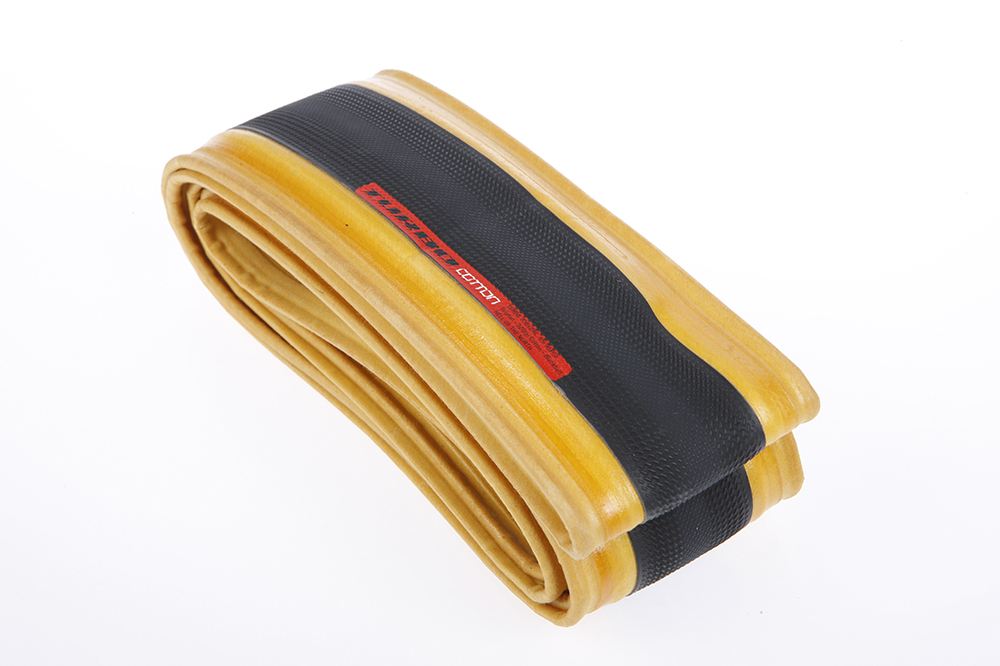
Specifications
Reasons to buy
Reasons to avoid
One of the grippiest and fastest feeling tires that we've tested, the Turbo Cotton road bike tires really put meaning into 'confidence inspiring'.
The Turbo Cottons are now available in 24, 26 and 28mm widths and each tire uses 320 TPI polycotton which makes them very supple and they also use a Gripton compound. In testing we found that the tires rolled extremely well and that they felt super fast.
We like them so much that we awarded them a spot on our Editor's Choice Award list. They come in three different sizes (24, 26 and 28mm) so there's something for everyone.
While these are more durable than the Vittoria Corsa tires, they are best for sunny days, when road detritus is minimal (and you're not getting the sidewall mucky), and expect only a season on the road on them, so not the most economical, but the most fun.
Read more: Specialized Turbo Cotton tire full review
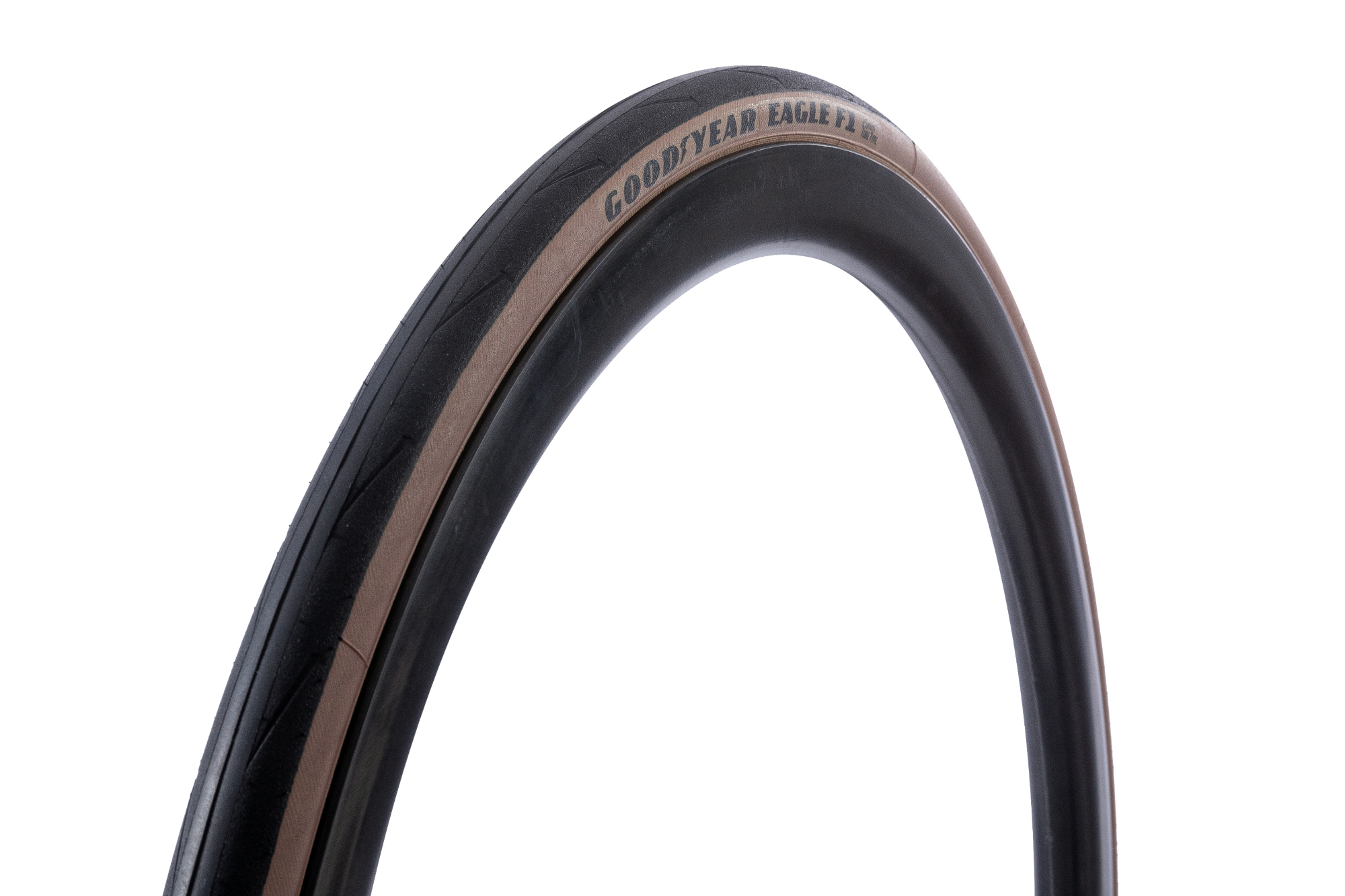
Specifications
Reasons to buy
Reasons to avoid
We sang the praises of these game changing tires. For many riders who are put off by the idea of going tubeless and lack the confidence or paraphernalia, the Goodyear Eagle F1 Tubeless Complete are by far the best road bike tire to start off with.
Considered America's top motorsport performance tire the Eagle range has crossed over into the cycling world exceptionally well, ticking every ideal road bike tire must-have list of suppleness, comfort, speed and durability.
But the big selling point is that, other than a cup of sealant, there's no technical equipment required. The tires are more than happy to be inflated with a standard road pump, making the tubeless set up much more accessible to many riders than with harder to seat tires like the Continental GP5000 TL. Weight-wise they're comparable to the Vittoria Corsa G2.0 TLR and the Schwalbe Pro One.
There are a few options available in terms of sidewall color and tire width. There's also a cheaper Sport option, where the brand promises much of the same good stuff, bar the tubeless capability.
Read more: Goodyear Eagle F1 Tubeless Complete tire full review
Best Road Bike Tires Buyers Guide
What are the best tires for a road bike?
There are three types of bike tire on the market - clinchers, tubulars and tubeless - and they each have their pros and cons.
First up is the clincher, the choice of the majority of road riders. This features a bead around the outside of the tire which hooks under a lip on the rim, with a separate inner tube running inside.
The main advantage of this system is convenience, with the inner tube being easy to change in the event of a puncture. There are a vast number on the market, so we rounded up the best bike inner tubes to help you find the best fit for your clincher.
Next is the tubular tire. With this design, the inner tube is sewn into the tire, with the whole thing then attached to the wheel using glue or adhesive rim tape. This is the choice of a lot of racers due to the generally lower rolling resistance and weight, particularly of the wheel rim since this doesn't need a lip, but is a faff to set up, expensive and can be impractical when you puncture.
Finally, you’ve got tubeless tires. These are similar to clinchers, but with the tire sitting firmly enough against the rim to hold the tire’s pressure, eliminating the need for an inner tube altogether. The tire is then filled with sealant, which plugs cuts or gashes in the rubber.
Our tubeless sealant buyer's guide explains all you need to know when choosing the right product for your tubeless tires.
This system has very low rolling resistance and greatly reduces the chance of punctures, although the snug fit that is required between the tire and the rim can make tubeless tires difficult to fit and it can be awkward to get the tire to seat properly.
The puncture protection offered by tubeless tires is very impressive. To see how impressive watch the video below where we hammer nails into a tire!
Video can a tubeless tire survive a nail?
What are the best puncture resistant road bike tires?
The three main categories to look out for in a tire are puncture proofing, the tire's rolling ability and grip levels. Whilst in an ideal world we’d have all three, in reality, we have to limit one to increase another.
In order to boost puncture protection, manufacturers will usually add an extra layer - a Kevlar or Vectran breaker in most cases - to catch foreign objects before they reach the tube. The tougher these layers are, the heavier and more sturdy they'll make the overall rubber - making them slower or less supple, so reducing grip.
Ultimately, you need to decide what's more important to you. Riders commuting on less than perfect road surfaces - especially during the winter - will favour puncture protection. If this is you then you'll probably want to choose from one of the best winter tires for road cycling instead.
A rider racing on a closed circuit may be more concerned with rolling resistance and grip.
If you are after maximum protection from flatting on a ride, then head over to our page dedicated to the best puncture-proof tires for cycling.
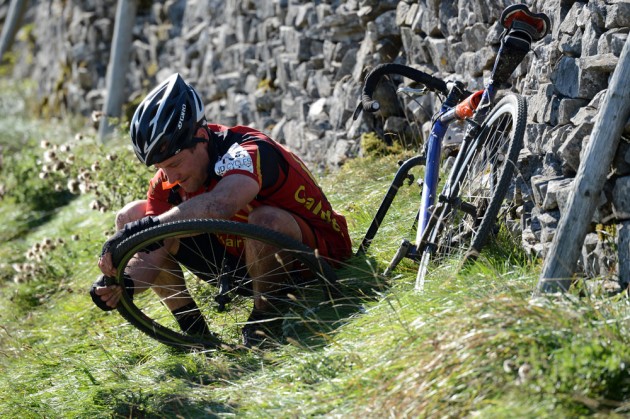
What is the best width for a road bike tire?
We have a couple of things to consider before we go in-depth. A standard road wheel size is 700c with the most common tire options being 23, 25 or 28mm widths.
Traditionally, 23mm widths were put on race bikes, 25mm for training and 28mm widths for a mixture of hard and rough roads.
With modern technology allowing for better tire construction, we’ve seen a definite shift in how different width tires are used. For example, most road riders now like to use 25mm tires as they handle better in the corners, can lower rolling resistance by dampening out uneven surfaces and can be run at lower pressures than 23mm tires.
Wider tires can deliver better comfort, puncture protection and grip, mainly at the cost of weight. They're better for wet winter roads too.
With modern disc brake road bikes generally offering greater tire clearance, 30 and 32mm tires are becoming more commonplace, especially on endurance or audax bikes.
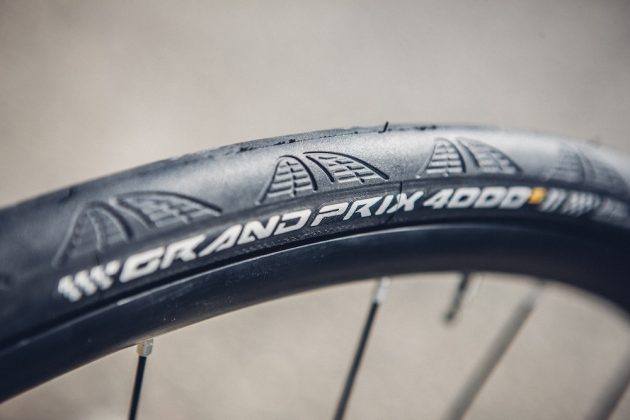
Should you change your road bike tires depending on the season?
Summer brings good weather, clean roads and the best road bikes out to play, so it seems ludicrous that we would stick a slow-rolling and heavy-duty tire on our bikes.
If a fast rolling tire is your thing, you’ll be expected to have lowered protection from punctures with a thinner puncture protection belt to help reduce weight and rolling resistance, which will help that fast feeling we all desire.
However, come the colder months many riders will opt for winter road bike tires to counter the associated bad weather and gritty harsh roads, to save them from being victims of the dreaded flint or glass puncture. If you're new to cycling, or even a recent returner, it's always good to know how to fix a puncture and mend an inner tube.
Larger tires allow for lower pressures that help absorb the bumps, increasing grip and comfort too. Watch out for mudguard clearance though as larger tires could be limited if you have minimal clearance.
If you're after something for more off road adventures, then it's worth investing in the best gravel bike tires.
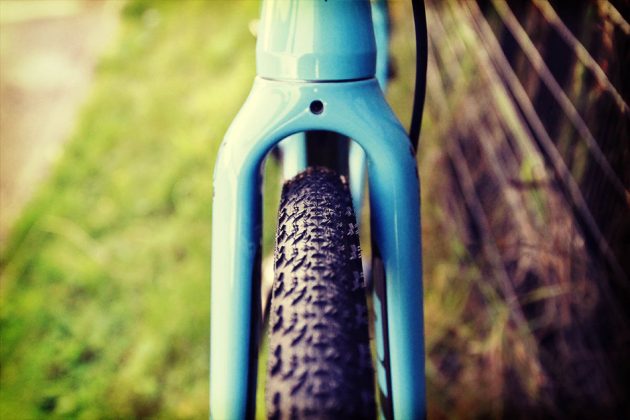
Do you need to change your road bike tires for commuting?
If you commute in town, you’re likely to need a more heavy-duty option. Broken glass and general debris mean the probability of slitting your tires is way higher. Speed isn’t everything for commuting, so you’ll want to look out for a hard-wearing tire that will give you some longevity for the money.
Are cheaper road bike tires any good?
What are we really paying for? In basic terms we pay for technology in the rubber, quality of the construction and weight.
Cheaper options tend to lack in grip and puncture protection and are usually supplied with a heavier, steel bead. Rigid steel beaded tires, other than being harder to transfer around off the bike, are heavier than folding alternatives.
Though cheaper, they can also be a pain to put on and pull off the wheel, mostly at the expense of your thumbs.
Although you may feel that a cheaper option is ok for you, some tire manufacturers ensure their compounds work well in a good range of temperatures, meaning either grip, protection or longevity works better all year round. It may be a big outlay but might pay to save money in the long run.
How do you know if your road bike tires are worn or damaged?
Keeping an eye on your tread is important too. Not only for the life of the tire, but watching out for stuck glass or flints that haven’t penetrated just yet.
Ideally, cleaning your bike regularly and giving your tires a quick once over before each outing could save you a puncture during your ride, unless you pick something up en-route of course.
If your time is limited, then it's worth knowing how to clean your road bike in seven minutes.

What do you need to repair a puncture?
As you’ll know, it doesn’t matter how well you prepare, you’ll inevitably get a puncture... there, we’ve said the P word!
There are seven essentials you need to take on every ride. In your pocket or seatpack you should carry at least a set of tire levers, puncture repair kit, two tubes, a mini-pump and a business card just in case you have a complete blow out. It does happen.
The latest race content, interviews, features, reviews and expert buying guides, direct to your inbox!
Simon Smythe is a hugely experienced cycling tech writer, who has been writing for Cycling Weekly since 2003. Until recently he was our senior tech writer. In his cycling career Simon has mostly focused on time trialling with a national medal, a few open wins and his club's 30-mile record in his palmares. These days he spends most of his time testing road bikes, or on a tandem doing the school run with his younger son.
